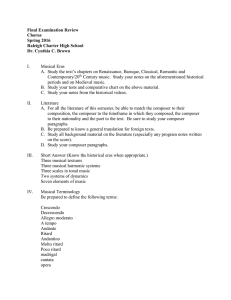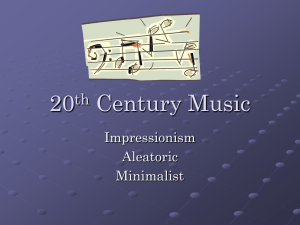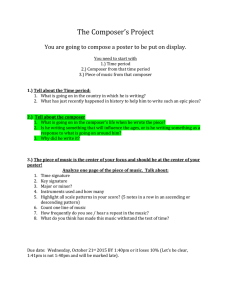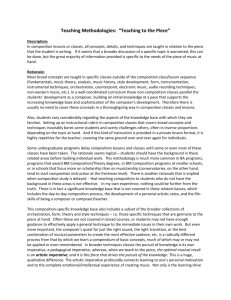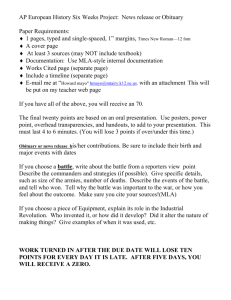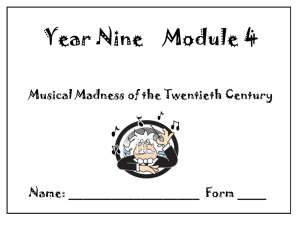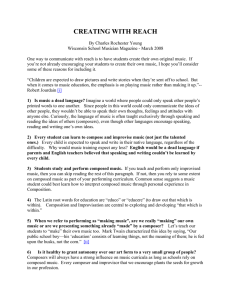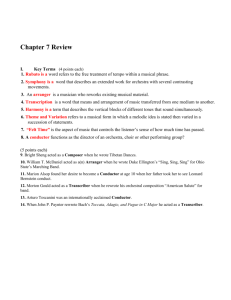Take a Chance
advertisement
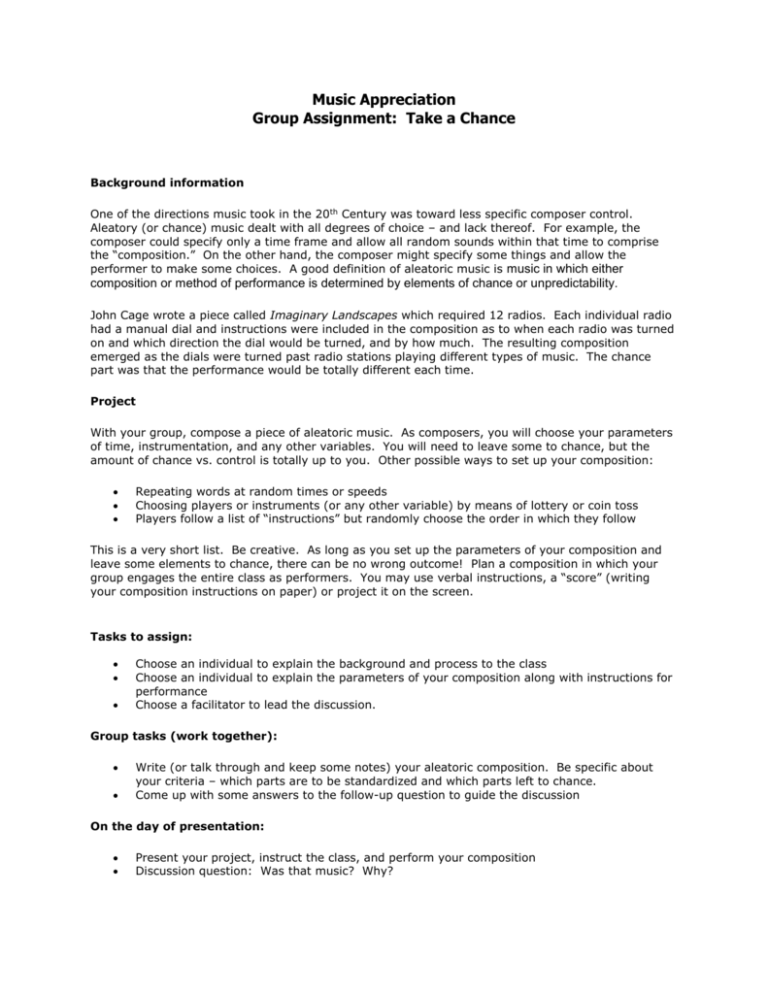
Music Appreciation Group Assignment: Take a Chance Background information One of the directions music took in the 20th Century was toward less specific composer control. Aleatory (or chance) music dealt with all degrees of choice – and lack thereof. For example, the composer could specify only a time frame and allow all random sounds within that time to comprise the “composition.” On the other hand, the composer might specify some things and allow the performer to make some choices. A good definition of aleatoric music is music in which either composition or method of performance is determined by elements of chance or unpredictability. John Cage wrote a piece called Imaginary Landscapes which required 12 radios. Each individual radio had a manual dial and instructions were included in the composition as to when each radio was turned on and which direction the dial would be turned, and by how much. The resulting composition emerged as the dials were turned past radio stations playing different types of music. The chance part was that the performance would be totally different each time. Project With your group, compose a piece of aleatoric music. As composers, you will choose your parameters of time, instrumentation, and any other variables. You will need to leave some to chance, but the amount of chance vs. control is totally up to you. Other possible ways to set up your composition: Repeating words at random times or speeds Choosing players or instruments (or any other variable) by means of lottery or coin toss Players follow a list of “instructions” but randomly choose the order in which they follow This is a very short list. Be creative. As long as you set up the parameters of your composition and leave some elements to chance, there can be no wrong outcome! Plan a composition in which your group engages the entire class as performers. You may use verbal instructions, a “score” (writing your composition instructions on paper) or project it on the screen. Tasks to assign: Choose an individual to explain the background and process to the class Choose an individual to explain the parameters of your composition along with instructions for performance Choose a facilitator to lead the discussion. Group tasks (work together): Write (or talk through and keep some notes) your aleatoric composition. Be specific about your criteria – which parts are to be standardized and which parts left to chance. Come up with some answers to the follow-up question to guide the discussion On the day of presentation: Present your project, instruct the class, and perform your composition Discussion question: Was that music? Why?
